
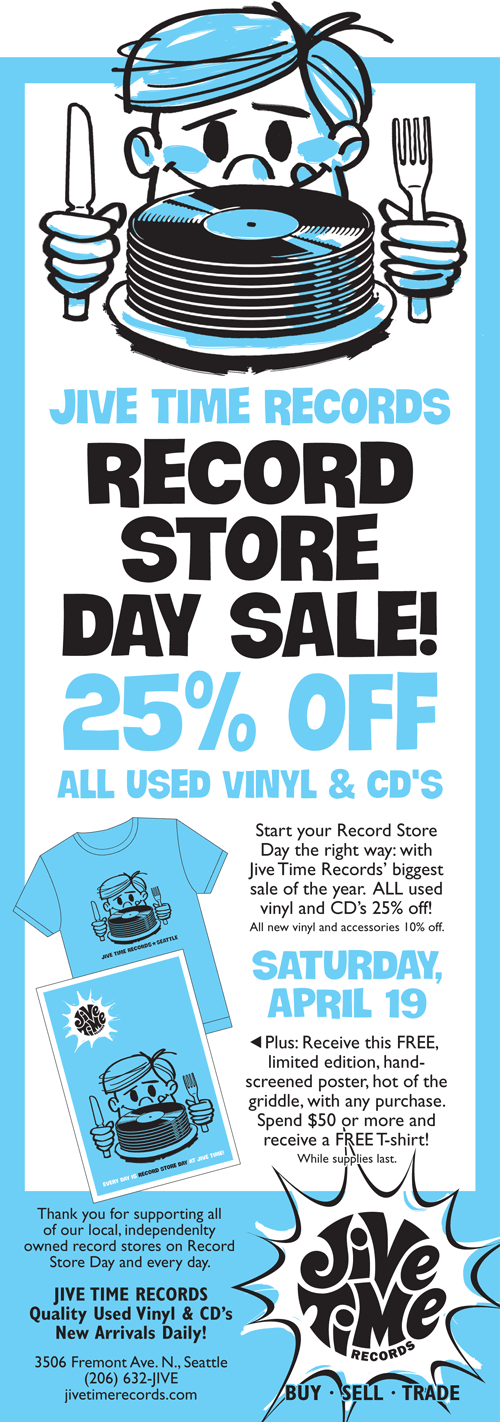 Opening at 10:00 am today. We’ll be adding fresh used stock throughout the day. Hope to see you!
Opening at 10:00 am today. We’ll be adding fresh used stock throughout the day. Hope to see you!


 Opening at 10:00 am today. We’ll be adding fresh used stock throughout the day. Hope to see you!
Opening at 10:00 am today. We’ll be adding fresh used stock throughout the day. Hope to see you!
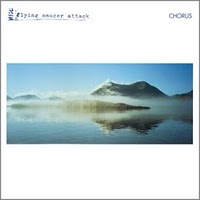 A singles collection, issued in 1996 compiling many of this British bands tough to find 45’s.
A singles collection, issued in 1996 compiling many of this British bands tough to find 45’s.
Founded in ’92, this band took “shoegaze” and bought it to such an extreme that you were no longer looking at your shoes in bliss, you were staring clean through your shoes, through the floor, through warm soil, into the molten/frozen core of the Earth. Sheet after sheet after sheet after blanket after pillow of feedback, with the most beautiful, elegantly sung/whispered vocals I have ever heard in my life. Every track swells, crests and recedes in a seemingly endless haze of soft white glows. When I was first exposed to this band in high school, the extremity of the basement production quality, coupled with my ear searching for debris to hang onto as the onslaught of noise cascaded out was comparable to the first times I heard Napalm Death’s “Scum” or the brutal intensity of Siege. The power of these recordings is unparalleled. I have owned this record for over 10 years, and with each listen, I detect a swirling, massive beehive texture, stinging and surging that I missed last time around. And the time before. Since those high school days, I have heard this band under the influence of more drugs than I care to mention in a work related review, but I will say this: They re-create the feeling of tripping more than ANY group from the 60’s I am aware of. Now will someone sell me a copy of their s/t LP sometimes called ‘Rural Psychedelia’ that I still cannot track down a copy of? –Richard
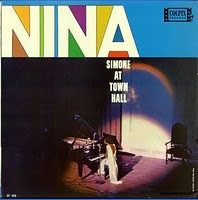 Nina Simone at Town Hall is a magnificent showcase for one of music’s most versatile talents. Simone’s voice is remarkably expressive, but it’s not enough to have a strong instrument. It’s her ability to utilize her instrument for maximum effectiveness that makes her one of my favorite singers. On this live performance, she mostly explores the somber range of emotions, with unfaithful lovers being a prominent cause of the sorrow. On “I Don’t Want Him Anymore”, Simone sings volumes of emotional back-story into a six-minute song. At first sounding resigned as she gently spurns her lover while confronting his mistress, she goes on to outline the many ways that she adored him. Instead of bitterness, she betrays her true feelings of devotion as she recounts each small act of love, only to again ironically claim that she doesn’t want him anymore. The heartbreak is palpable, as it is on the song “The Other Woman”, which cleverly inverts our expectations by spending the back half describing how devastating it is to be the home-wrecker, not just the betrayed wife. Although Nina is widely recognized as a gifted singer and interpreter of songs, she is equally adept as a piano player, an attribute which is largely overlooked. Here, with minimal accompaniment, she really shines in this regard. Her playing is some unlikely hybrid of jazz, blues and classical, in which every note is as carefully played as her words are sung. This is a tremendous album for lovers of vocal jazz or torch songs. It’s definitely a late night album, due to its intimacy and the way it rewards your complete attention. Highly recommended. –Lucas
Nina Simone at Town Hall is a magnificent showcase for one of music’s most versatile talents. Simone’s voice is remarkably expressive, but it’s not enough to have a strong instrument. It’s her ability to utilize her instrument for maximum effectiveness that makes her one of my favorite singers. On this live performance, she mostly explores the somber range of emotions, with unfaithful lovers being a prominent cause of the sorrow. On “I Don’t Want Him Anymore”, Simone sings volumes of emotional back-story into a six-minute song. At first sounding resigned as she gently spurns her lover while confronting his mistress, she goes on to outline the many ways that she adored him. Instead of bitterness, she betrays her true feelings of devotion as she recounts each small act of love, only to again ironically claim that she doesn’t want him anymore. The heartbreak is palpable, as it is on the song “The Other Woman”, which cleverly inverts our expectations by spending the back half describing how devastating it is to be the home-wrecker, not just the betrayed wife. Although Nina is widely recognized as a gifted singer and interpreter of songs, she is equally adept as a piano player, an attribute which is largely overlooked. Here, with minimal accompaniment, she really shines in this regard. Her playing is some unlikely hybrid of jazz, blues and classical, in which every note is as carefully played as her words are sung. This is a tremendous album for lovers of vocal jazz or torch songs. It’s definitely a late night album, due to its intimacy and the way it rewards your complete attention. Highly recommended. –Lucas

If you are curious about inspired Motorhead’s unique sound, and have already explored MC5, The Stooges, Hawkwind and The Groundhogs, then go no further than this album. Larry Wallis and Duncan Sanderson later appeared on Motorhead recordings and the song “City Kids”, debuting here, is also featured on Motorhead’s 1979 LP On Parole. “City Kids” here is more stark than Lemmy’s amphetamine-enriched version, but no less powerful. ‘I wish I was a Girl” is a track worthy of the Groundhogs “Split” album in its inventiveness – but the raw power is undiminished. Sure it lacks a little something due to recording techniques in those days – a clear sense of perspective is needed, as this is music of its time and yet way ahead of it. “When’s the Fun Begin” is not one to listen to if you’re verging on a depression, but provides a nice contrast to the driving “Chromium Plating” and “Raceway.” Something about these tracks actually seems to contain the acrid smell and excitement of motor racing in a far less clinical way than say, Fleetwood Mac’s “The Chain.” “Chambermaid” is quirky and may require several listens to pick up on the humour, and “Street Urchin” is the track that leaves you wanting more.
Kings of Oblivion is one of the best-kept secrets of hard rock – and an important part of its history. If you like your rock and roll “real,” it doesn’t get much more real than this. Just don’t go expecting Judas Priest, AC/DC or Black Sabbath; This is high-energy rock that truly belongs on the streets, and a landmark album in its genre. Truly a classic. —Fuuhq
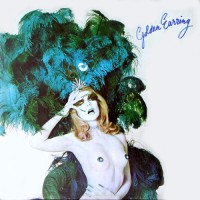
This 1973 outing is the album that raised Golden Earring to an international level of popularity, primarily on the strength of the hit single and enduring radio favorite “Radar Love.” However, there is much more to this album than just that hit.
It starts with a bang thanks to “Candy’s Going Bad,” a piece that starts off as a thunderous, pounding rocker but transforms midway into a bluesy instrumental mood piece. Other highlights include the hit single “Radar Love,” a relentless rock tune with a left-field instrumental break in which tribal drums duel with a big band-style horn section, and “Just Like Vince Taylor,” a guitar-slinging slice of boogie rock that pays tribute to the fallen rock idol of the title. The album also includes what may be the group’s finest prog effort in “Vanilla Queen”: this classic builds from pulsating, ominous verses dominated by synthesizer into a hard-rocking chorus and also throws in a stark acoustic guitar midsection before climaxing in a frantic band jam augmented by blaring horns and an ever-spiraling string section. Despite the album’s overall strength, not every song reaches these heights: “Are You Receiving Me?” recycles some hooks from the group’s past classic “She Flies on Strange Wings,” and the twangy country-pop of “Suzy Lunacy (Mental Rock)” is a little too poppy to gel with the rest of the album. However, even these tunes benefit from tight arrangements and a spirited, totally committed performance from the group.
The result is an album that retains its power today. In the end, Moontan is a necessity for Golden Earring fans, and a worthwhile listen for anyone interested in 1970s rock at its most adventurous. —Donald
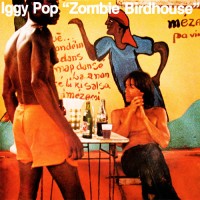
Iggy’s pop punk stylings of Party take a decidedly weird turn on Zombie Birdhouse, plunging into warped New Wave territory with pieces ranging from the insanely catchy Run Like a Villain and The Villagers to the closing incoherence of Watching the News and Street Crazies (the former of which paved the way for future avant-Iggy works like the title track from American Caesar). Yes, there’s a prominent drum machine, and yes Iggy is batshit crazy on this, but that’s part of what makes it work – tossed aside as an irrelevance by the big labels, Iggy gets back to basics with an independent label and comes up with this triumph. It might be goofy, unusual, unexpected, and surprising, but isn’t that precisely what we want from Iggy? —Warthur
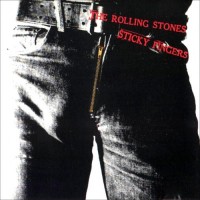
The first album released by the Stones in the 1970s, it’s an album drenched in a sheen of perspiration. Many of the tracks were conceived in the late 60s (Wild Horses, Brown Sugar) and as such, would fit right in on the previous Stones’ album, Let It Bleed. While that album oozed menace, this album seems to be mired in a drug-induced haze. Known for its hits, the real gems are hidden like a junkie’s last healthy vein.
The album kicks off with Brown Sugar, a song about interracial sex and cheap dope. A classic, it captures the initial surge of energy that propels the Stones into the 70s. Bobby Keys’s sax adds an extra touch of raunchy sex appeal. “Sway” is a yearning tune full of resignation to an inevitable descent into depression. “Wild Horses” is cut from the same thematic cloth though it is far more famous. “Can’t You Hear Me Knocking” is a seven minute-plus song, a showcase for MIck Taylor’s virtuoso guitar. Keith Richards has stated that Ron Wood is his favorite co-guitarist but Taylor is the better musician. The majority of the song is a jam between dueling guitars, two brothers of diverse personalities trying to outdo each other in front of the audience. “You Gotta Move” is a nod to the blues masters the Stones revered (and from whom they pinched a tune or two… or three… or…). “Bitch” opens Side B. It’s pace is quicker than Brown Sugar but while a good tune it lacks that extra bit of edge and bite that the album opener has. “I Got the Blues” is a retreat back into that dark cave of weariness. The lyrics express hope that one’s former flame is now happy but Jagger’s voice betrays this as a lie; he misses her and what he would do do have her back. “Sister Morphine” is the bottom of the drug induced state; the singer’s waiting for Death. “Dead Flowers” is the hidden jewel of this album. The lyrics reveal shame, an attempt to run from the light that would reveal the singer’s addiction. Hidden from daylight, from prying eyes of the upper crust of society, one can indulge in that blissful euphoria that the drug of choice provides. There’s a promise that the singer will outlive others and will be sure to be at their graves long after they’re gone. As melancholy as “Moonlight MIle” is, there’s a glimmer of hope in it. The lyrics indicate an partial emergence from the haze and at least offer the possibility that things will be better, if not then, than someday.
This is the Stones album you play when you’re hanging on your back porch with your one or two friends or your lover, a beer or a glass of wine in your hand; the one you play as you drive down dark lonely roads as you travel through middle America; the one makes your pause and think about that girl that got away when you hear it in a pub on Thursday evening. It’s the one that lets you know that you’ve crawled through a mile of sewage and came out on the other side; dirty, sweaty, smelly, scarred. But alive. —Neunzehn
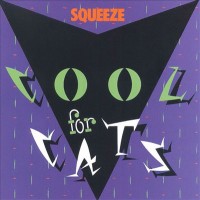
Squeeze’s first three albums trace the startling transformation of a band evolving from a diamond-in-the-rough punk band with an unmistakable pop sensibility, to a polished new-wave outfit that seems to effortlessly crank out an unending stream of catchy masterpieces. “Cool For Cats” is the second album, and the sound is squarely in the middle between the stumbling debut, “UK Squeeze”, and the fully-developed third album, “Argybargy”, a true classic of Beatlesque pop-rock. The distinctive vocal sound of early Squeeze comes from the unusual gimmick of having both Glenn Tilbrook and Chris Difford singing the lead together, with Tilbrook an octave higher than Difford. But it wasn’t long before they moved away from that sound, with the sweeter-voiced Tilbrook gradually taking over most of the lead vocal chores from the courser Difford. At the same time, the punk-ish energy of the earlier material gave way to the slower tempos and polished professionalism that has characterized the band for most of their long career. This evolution was dramatic and unmistakable from the debut, to “Cool For Cats”, to “Argybargy”, by which time the transformation was almost complete. “Cool For Cats” highlights are many, starting with the lead track, “Slap And Tickle”, which is very reminiscent of the debut. The album then hits a lull, with the next 5 tracks not making much of an impression, but it finishes with 6 straight winners, starting with the high-energy pop of “Hop Skip And Jump”. The next track is the stunning “Up The Junction”, with Difford’s lyrics telling a woeful tale of boy meets girl, boy gets girl, boy loses girl because of his heavy boozing. Practically a short story set to music. The booze theme is repeated 2 songs later on the irresistibly catchy “Slightly Drunk”. In fact, excessive drinking would become a recurring theme for lyricist Difford for many years to come. The next track, “Goodbye Girl” is a Tilbrook-sung ballad with a lovely melody, the type of song that would become Squeeze’s trademark. The album comes to a close with the delightful, punky title track. All in all, a stellar effort by one of the greatest pop-rock bands ever. —Eric
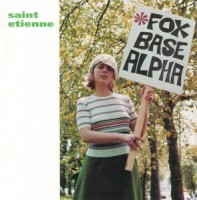
Saint Etienne’s first album, Foxbase Alpha, rightfully set the standard for pop music. In a world where “pop music” is seen as somehow substandard, Saint Etienne proves to the critics that pop can both be catchy and musically worthwhile. “Only Love Can Break Your Heart,” a Neil Young cover, is an obvious hit, but less likely tracks also sparkle: “Girl VII,” “Spring” and “Carnt Sleep” run the gamut from uptempo fun to downtempo lullaby. And, as if to prove their range, “Stoned to Say the Least” is a instrumental house track, while “Like the Swallow” starts off ambient, then verges into melancholy. There are a few missteps, like the overused sample on “She’s the One” or the slightly watery “London Belongs to Me,” but the summery warmth of “People Get Real” and “Nothing Can Stop Us” amply make up any shortcomings. —Scoundrel
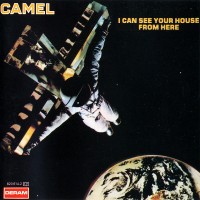
While prog-purists might frown at I Can See Your House From Here, which watches Camel trod closer to the middle of the road, anyone who’s been seduced by the easy-going charm that is the band’s calling card will find it well worth their time. Confusing lineup changes continue to hallmark the second phase of Camel’s career, which here features two keyboardists in Kit Watkins (Happy The Man) and Jan Schelhaas (Caravan), plus Colin Bass on his namesake and some lead vocals. Continuing to feel pressure from their label for some kind of chart action, Camel offer up straightforward pop-inclined material in the tense “Wait,” easy going melodies of “Your Love Is Stranger Than Mine,” and tough-guy tale “Neon Magic,” while “Remote Romance” is an odd stab at synth pop. Sandwiched between these tracks are the very Happy The Man-ish instrumental “Eye of the Storm,” and some excellent blends of prog and pop on “Who We Are” and “Hymn to Her,” before the cold vastness of space is explored via an extended guitar and synthesizer showcase in “Ice.” Despite it’s commercial leanings and continued shuffling of the band’s lineup, I Can See Your House From Here still delivers the Camel-essence. —Ben
 Wow! I’ve been looking for the perfect Coltrane album to match my taste and here it is. Some people might say that the title track is very similar to Sketches of Spain by Miles Davis, but I also detected a hint of music from Tijuana Moods by Charles Mingus. Of course, nobody would dare mention Mingus. ;) That aside, this is beautiful jazz. Coltrane’s plays extremely well on soprano and tenor sax. When I saw the rest of the lineup for Ole Coltrane I knew it would be one of my favorites. It was definitely a stroke of genius to mix these two bassists. The interplay between them is incredible throughout. What’s great is that Coltrane steps back and lets the others shine. While everyone plays admirably, in my opinion it’s Eric Dolphy that steals the show. He pretty much steals the show on every album that he appears. When he plays a solo on the alto sax, you can almost feel him reaching into your chest and squeezing your heart. Even the extra track, “To Her Ladyship”, is great. Don’t forget to pick this album up. It would be a serious loss. –Rob
Wow! I’ve been looking for the perfect Coltrane album to match my taste and here it is. Some people might say that the title track is very similar to Sketches of Spain by Miles Davis, but I also detected a hint of music from Tijuana Moods by Charles Mingus. Of course, nobody would dare mention Mingus. ;) That aside, this is beautiful jazz. Coltrane’s plays extremely well on soprano and tenor sax. When I saw the rest of the lineup for Ole Coltrane I knew it would be one of my favorites. It was definitely a stroke of genius to mix these two bassists. The interplay between them is incredible throughout. What’s great is that Coltrane steps back and lets the others shine. While everyone plays admirably, in my opinion it’s Eric Dolphy that steals the show. He pretty much steals the show on every album that he appears. When he plays a solo on the alto sax, you can almost feel him reaching into your chest and squeezing your heart. Even the extra track, “To Her Ladyship”, is great. Don’t forget to pick this album up. It would be a serious loss. –Rob
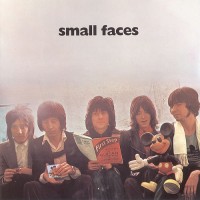
First Step establishes the revamped Faces’ change of direction with a set of woozy, laid back blues rock highlighted in swinging boogie numbers like “Shake, Shudder, Shiver,” “Three Button Hand Me Down” and the Delta flavored “Around the Plynth” (resurrected from Stewart and Wood’s tenure in The Jeff Beck Group), a stomping reading of Dylan’s “Wicked Messenger,” and the stately, powerful “Flying.” Elsewhere, the eminently affable Ronnie Lane checks in with a signature back country ballad in “Stone.” Fleshed out with two instrumentals, First Step ends up a little underwritten and jammy, but is ripe with the band’s signature brand of disheveled rock. —Ben